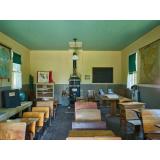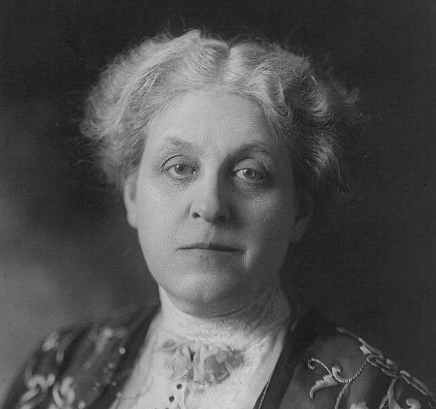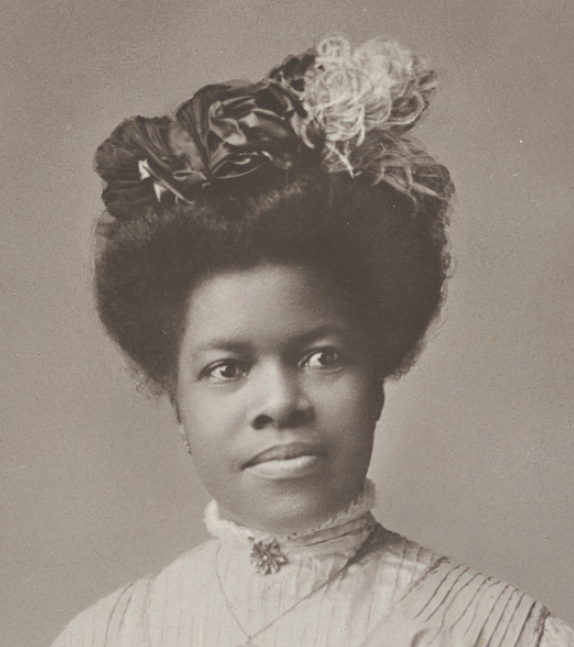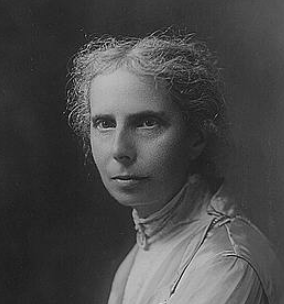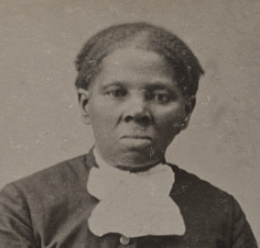 Mary Johnson
Teachers are encountering this all the time. A Texas textbook is (in)famous for referring to enslaved as "unpaid workers" in a graphic about the slave trade. Parents and certain groups don't want the Civil Rights Movement referred to as a "struggle" or a "fight". In New Mexico, especially the town adjacent to where I work, we see Spanish colonization and the brutalization and enslavement of the Pueblo, Dine', and Apache celebrated as enlightening the indigenous and Onate portrayed as a hero with La Malinche. (Generally espoused by people who like to claim "pure" Spanish ancestry.) It's nauseating for those of us engaged with not only the primary documents and genealogical records, but also the archaeology of the brutality.
Mary Johnson
Teachers are encountering this all the time. A Texas textbook is (in)famous for referring to enslaved as "unpaid workers" in a graphic about the slave trade. Parents and certain groups don't want the Civil Rights Movement referred to as a "struggle" or a "fight". In New Mexico, especially the town adjacent to where I work, we see Spanish colonization and the brutalization and enslavement of the Pueblo, Dine', and Apache celebrated as enlightening the indigenous and Onate portrayed as a hero with La Malinche. (Generally espoused by people who like to claim "pure" Spanish ancestry.) It's nauseating for those of us engaged with not only the primary documents and genealogical records, but also the archaeology of the brutality.
That is such an interesting article, 
Especially interesting to me were the sections on coded language and on tropes or platitudes that describe the teaching of history. I've certainly heard them all, but I hadn't thought about the likelihood that some who do not value inclusion tend to flip the terms for their own purpose. I'm going to need to chew on that for awhile.
That is such an interesting article, 
Especially interesting to me were the sections on coded language and on tropes or platitudes that describe the teaching of history. I've certainly heard them all, but I hadn't thought about the likelihood that some who do not value inclusion tend to flip the terms for their own purpose. I'm going to need to chew on that for awhile.
Museums Seen as Trustworthy in K-12 History Curriculum
A new study out questioned K-12 museum-going parents and educators about curriculum in their schools -- how happy or unhappy they are with it and how museums are perceived as being integral to the educational process.
I am ALWAYS advocating for educators to reach out to their local and regional (even national) museums for help with primary sources in the classroom. Here is why!
As a museum professional, I can help YOU make contact with the museums in your area or point you to where the primary source repositories are in your state. You can send me a private message with the little envelope icon at the top of the task bar!
A new study out questioned K-12 museum-going parents and educators about curriculum in their schools -- how happy or unhappy they are with it and how museums are perceived as being integral to the educational process.
I am ALWAYS advocating for educators to reach out to their local and regional (even national) museums for help with primary sources in the classroom. Here is why!
As a museum professional, I can help YOU make contact with the museums in your area or point you to where the primary source repositories are in your state. You can send me a private message with the little envelope icon at the top of the task bar!
Anti-Defamation League CEO Jonathan Greenblatt also commended Santa J. Ono, president of the University of Michigan, for bringing a sizeable delegation including administrators, students, alumni and community members to view the pop-up NOVA exhibition in West Bloomfield, Michigan. NOVA survivor Dani Dvir addressed the group, as did President Ono, who reflected on the impact of bearing witness, mourning the victims and honoring the survivors.

Michigan delegation visiting the NOVA exhibition. (Photographer: John Hardwick)
The Moment Music Stood Still: The Nova Music Festival Exhibition

The Moment Music Stood Still: The Nova Music Festival Exhibition is a powerful memorial dedicated to the lives lost and forever changed at the Nova Music Festival in Re’im Israel on October 7, 2023.
The traveling exhibition opened in Tel Aviv in December 2023 and has since been viewed in New York City, Los Angeles, Philadelphia and Detroit where I recently was privileged to see it. The exhibition travels next to Miami.
Through a primary source collection of remnants and personal artifacts salvaged from the festival grounds, as well as video testimonies and written first-person accounts, visitors are invited to experience the stories, memories and messages of those who were present at the festival.
The Detroit pop-up exhibit centers around a unifying call from survivors: “We will dance again,” and serves as a testament to both the vibrancy of life before the tragedy and the strength that emerges in its aftermath.
The exhibition website provides press coverage, including a very powerful CBS Sunday Morning segment. Due to security measures, an upcoming schedule is not readily available but there is an option to sign up via email for a NOVA Newsletter.
If you have already viewed the exhibition or are able to attend in the coming months, please share your impressions.
May the exhibition continue to serve as an enduring memorial enabling viewers to “bear witness” to the events that occurred on that day and to look with hope and healing toward the future.
Nova Music Festival Israel–Hamas war Museum exhibitions Difficult Topics
This is such a powerful compilation of resources memorializing the October 7th event. The exhibition web site has much to offer with even more of an impact on those who attended in person. Thank you for posting these as this exhibit will be an ongoing reminder of the tragic events and the continuing struggle to move forward to "dance again".
The Moment Music Stood Still: The Nova Music Festival Exhibition

The Moment Music Stood Still: The Nova Music Festival Exhibition is a powerful memorial dedicated to the lives lost and forever changed at the Nova Music Festival in Re’im Israel on October 7, 2023.
The traveling exhibition opened in Tel Aviv in December 2023 and has since been viewed in New York City, Los Angeles, Philadelphia and Detroit where I recently was privileged to see it. The exhibition travels next to Miami.
Through a primary source collection of remnants and personal artifacts salvaged from the festival grounds, as well as video testimonies and written first-person accounts, visitors are invited to experience the stories, memories and messages of those who were present at the festival.
The Detroit pop-up exhibit centers around a unifying call from survivors: “We will dance again,” and serves as a testament to both the vibrancy of life before the tragedy and the strength that emerges in its aftermath.
The exhibition website provides press coverage, including a very powerful CBS Sunday Morning segment. Due to security measures, an upcoming schedule is not readily available but there is an option to sign up via email for a NOVA Newsletter.
If you have already viewed the exhibition or are able to attend in the coming months, please share your impressions.
May the exhibition continue to serve as an enduring memorial enabling viewers to “bear witness” to the events that occurred on that day and to look with hope and healing toward the future.
Nova Music Festival Israel–Hamas war Museum exhibitions Difficult Topics
Thank you for making the connection to the power of primary sources to tell these difficult stories,  Margaret Lincoln
Not only do primary sources personalize and make painfully real the trauma of those who experienced the Nova Music Festival attack, but I think presenting the stories through art adds another layer of pathos and empathy. Seen through an artistic lens, memorials such as the 9/11 Memorial and Museum and the Oklahoma City National Memorial and Museum leave a deeper impression.
Margaret Lincoln
Not only do primary sources personalize and make painfully real the trauma of those who experienced the Nova Music Festival attack, but I think presenting the stories through art adds another layer of pathos and empathy. Seen through an artistic lens, memorials such as the 9/11 Memorial and Museum and the Oklahoma City National Memorial and Museum leave a deeper impression.
The Moment Music Stood Still: The Nova Music Festival Exhibition

The Moment Music Stood Still: The Nova Music Festival Exhibition is a powerful memorial dedicated to the lives lost and forever changed at the Nova Music Festival in Re’im Israel on October 7, 2023.
The traveling exhibition opened in Tel Aviv in December 2023 and has since been viewed in New York City, Los Angeles, Philadelphia and Detroit where I recently was privileged to see it. The exhibition travels next to Miami.
Through a primary source collection of remnants and personal artifacts salvaged from the festival grounds, as well as video testimonies and written first-person accounts, visitors are invited to experience the stories, memories and messages of those who were present at the festival.
The Detroit pop-up exhibit centers around a unifying call from survivors: “We will dance again,” and serves as a testament to both the vibrancy of life before the tragedy and the strength that emerges in its aftermath.
The exhibition website provides press coverage, including a very powerful CBS Sunday Morning segment. Due to security measures, an upcoming schedule is not readily available but there is an option to sign up via email for a NOVA Newsletter.
If you have already viewed the exhibition or are able to attend in the coming months, please share your impressions.
May the exhibition continue to serve as an enduring memorial enabling viewers to “bear witness” to the events that occurred on that day and to look with hope and healing toward the future.
Nova Music Festival Israel–Hamas war Museum exhibitions Difficult Topics

The Moment Music Stood Still: The Nova Music Festival Exhibition is a powerful memorial dedicated to the lives lost and forever changed at the Nova Music Festival in Re’im Israel on October 7, 2023.
The traveling exhibition opened in Tel Aviv in December 2023 and has since been viewed in New York City, Los Angeles, Philadelphia and Detroit where I recently was privileged to see it. The exhibition travels next to Miami.
Through a primary source collection of remnants and personal artifacts salvaged from the festival grounds, as well as video testimonies and written first-person accounts, visitors are invited to experience the stories, memories and messages of those who were present at the festival.
The Detroit pop-up exhibit centers around a unifying call from survivors: “We will dance again,” and serves as a testament to both the vibrancy of life before the tragedy and the strength that emerges in its aftermath.
The exhibition website provides press coverage, including a very powerful CBS Sunday Morning segment. Due to security measures, an upcoming schedule is not readily available but there is an option to sign up via email for a NOVA Newsletter.
If you have already viewed the exhibition or are able to attend in the coming months, please share your impressions.
May the exhibition continue to serve as an enduring memorial enabling viewers to “bear witness” to the events that occurred on that day and to look with hope and healing toward the future.
Nova Music Festival Israel–Hamas war Museum exhibitions Difficult Topics
Consortium Partner Local Learning have developed a learning packet on Mount St. Helens using oral histories from the Washington State Parks. It is designed for Museum Educators, but would be wonderful in the classroom too.
The packet includes primary sources, oral histories, worksheets, and graphic organizers.
3 - 5 6 - 8 9 - 12 13+ Social Studies/History Science volcano Washington Mount St. Helens museum
Testimonials
- I love that there is new info on the site daily!
- I had a wonderful time working with the Library of Congress and learning about all of the resources at my fingertips!
- The TPS Teachers Network has an equal exchange of ideas. You know it's not a place where you're being judged.
- My colleagues post incredibly fine resources and ideas....the caliber of the suggestions and resources make me feel that I take a lot from it. It's a takeaway. And I hope that I can give back as much as I get.
- Going into this school year, I have a fantastic new resource for my own instruction and to share with my colleagues!
- I am very glad that I discovered the TPS Teachers Network through RQI. Great resources can be hard to find out there on the internet!

